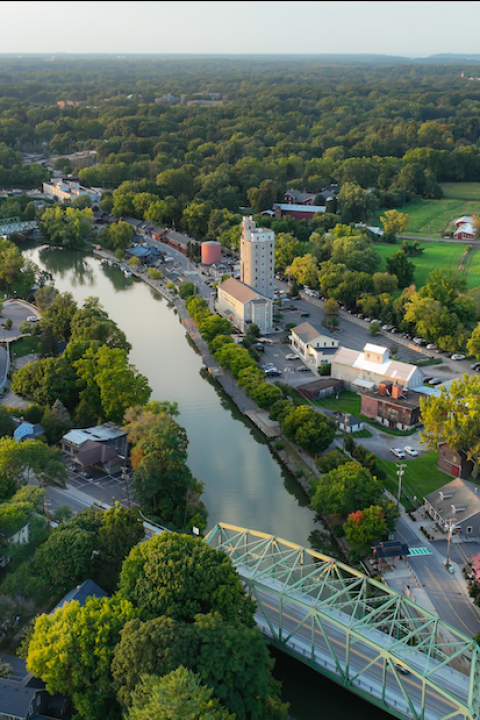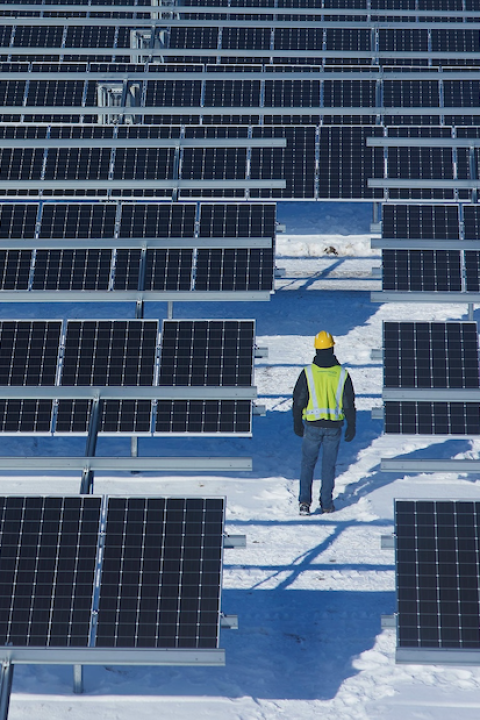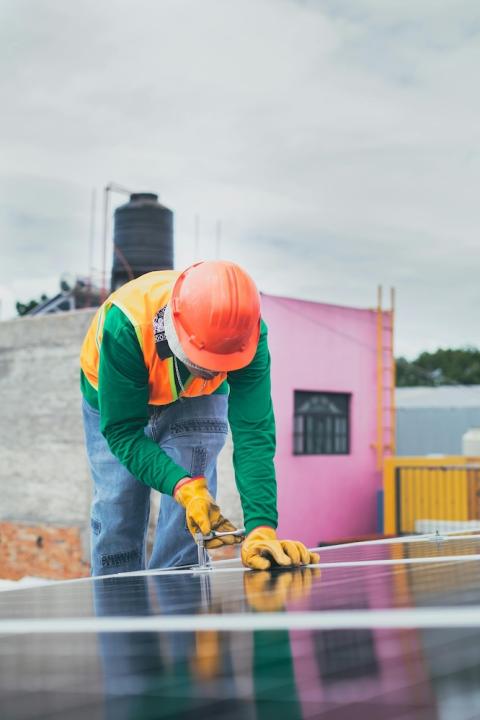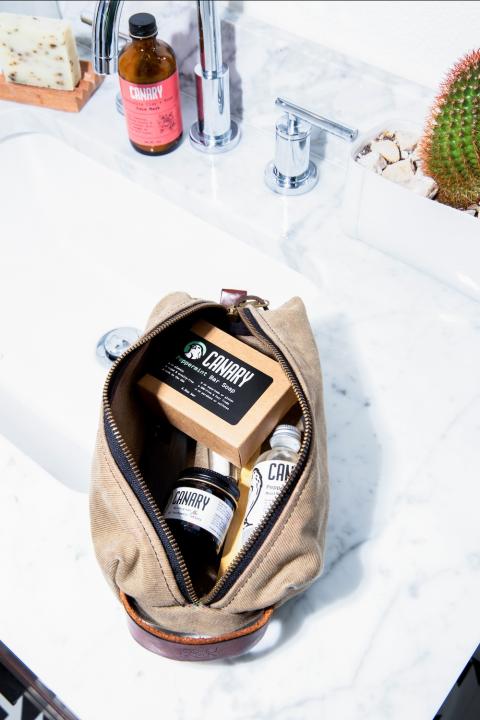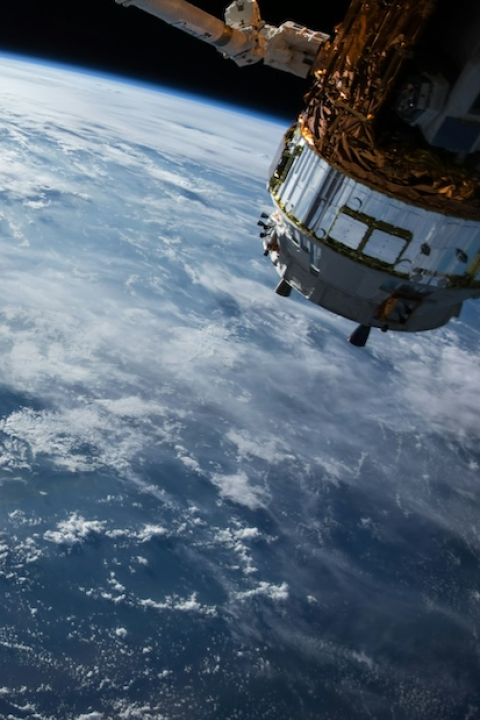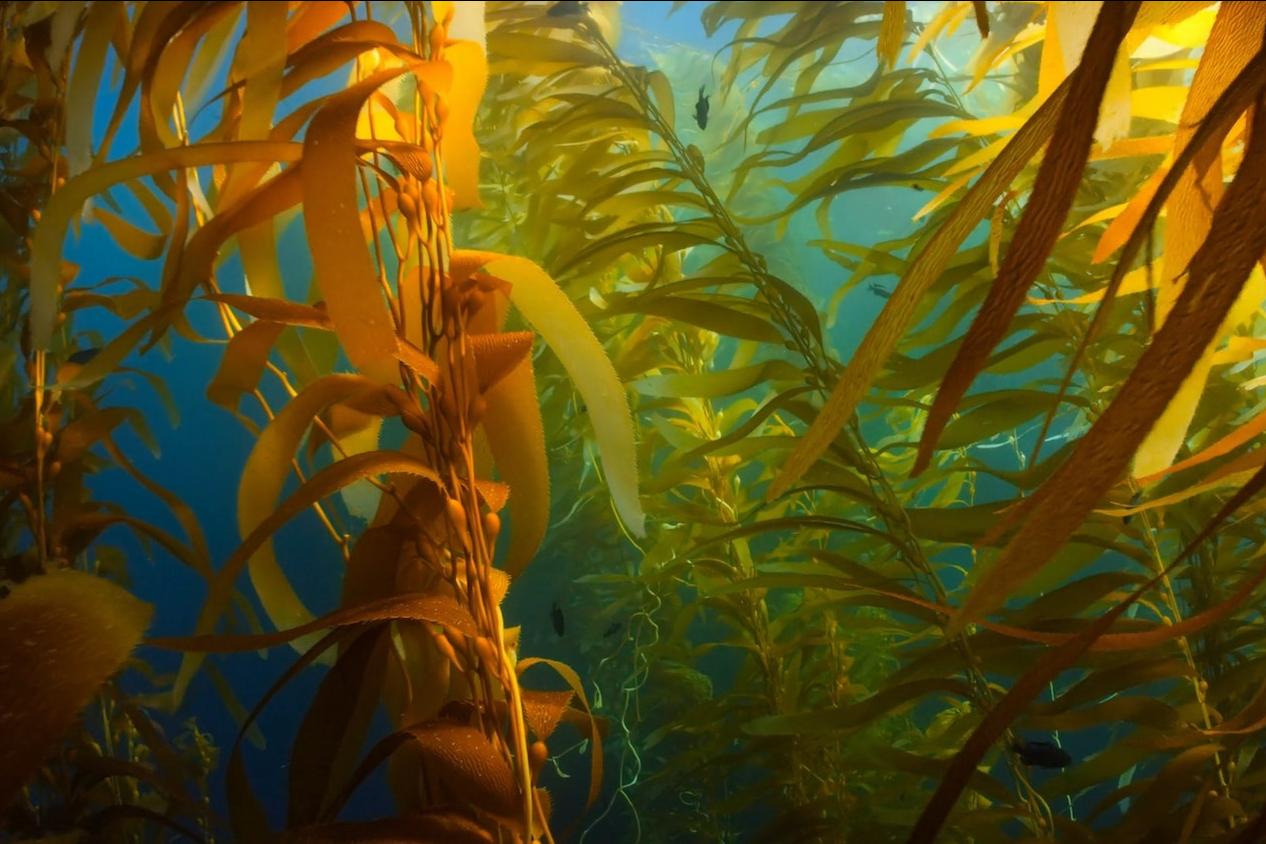
Kelp may bring up images of underwater forests and frolicking sea otters, but there’s more to this seaweed than meets the eye. These ecosystems are powerhouses of marine diversity, and kelp is found in products from food to soil conditioners. Now you can wear it, too, as innovators find success in turning this giant seaweed into fiber.
The startup Keel Labs says its yarn made from kelp comes with a significantly lower environmental footprint than other common fibers. In addition, kelp is like the teenager of the crop world, sprouting up to 18 inches per day. Could the ocean hold the key to eco-friendly fashion?
Launching a kelp-based fiber
After witnessing the unsustainable practices in the fashion industry, Aleks Gosiewski and Tessa Callaghan founded Keel Labs in 2017. With a mission built on ocean-based materials, the startup recently launched its flagship product, Kelsun yarn.
Produced from biopolymers — large molecules obtained from living things — extracted from kelp, it’s mixed with cotton to produce a surprisingly soft yarn. Obviously, it's aimed at the fashion industry, but it's also applicable to home furnishings, interiors and motor vehicles.
While not the first kelp-based fiber out there, Kelsun yarn is unique for having a high content from seaweed, said Chris Mekeel, the company’s vice president of research and development.
“Across the board, you can find novel companies that are solving old problems in new ways, and they're pulling from recent advances in biotech and biomaterials,” Mekeel said. “Look at the polymer that we're working with: If we wanted to engineer and design that polymer, we couldn't do as good of a job as nature's done through evolution over millions of years.”
Keel Labs’ biopolymer technology also has the potential to replace petroleum-based and plastic products, Mekeel said, though the company's current focus is fibers and textiles.
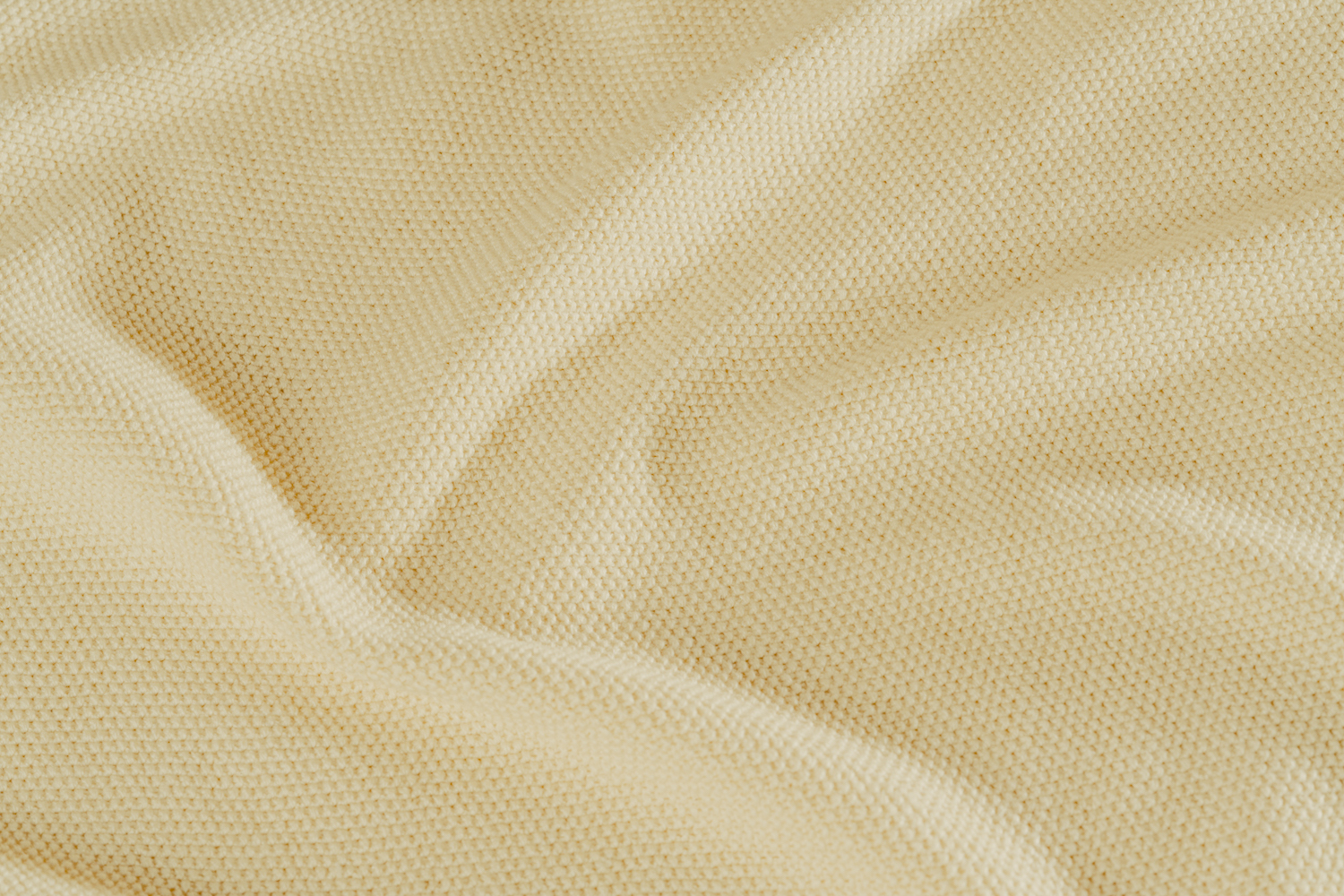
The high cost of fashionable fiber
Kelp’s potential makes sense. It’s hardly news that the fashion industry has sustainability issues, starting with its roots: fiber.
For starters, many synthetic fibers, like polyester and acrylic, are produced from petroleum, a nonrenewable resource. They also shed a lot of microfibers into waterways when they’re washed. Globally, they contribute around 35 percent of the microplastics in oceans — making them the largest source, according to a report from the International Union for Conservation of Nature. Polyester production also comes with a sizable carbon footprint — up to 4 percent of the world’s carbon emissions.
On the other hand, natural fibers have their own set of problems. For example, 2,700 liters of water is used to make one cotton shirt, according to the World Resources Institute. That’s what you’d drink in over two years. This hefty use can be linked to dwindling water supplies in some parts of the world.
Cotton is also called the world’s dirtiest crop for a reason. Its cultivation accounts for nearly 5 percent of global pesticide sales and 10 percent of insecticide sales, according to the Better Cotton Initiative. Pesticide use seriously damages the environment and harms farmers, potentially poisoning millions each year.
Despite this, there is a push for more sustainable and organic cotton. For instance, the Better Cotton Initiative supports practices like reducing pesticide use, using water sustainably, providing decent working conditions, and preserving soil health and biodiversity. While they’ve made great strides, sustainability programs like Better Cotton only cover around 20 percent of global cotton production.
With all of this in mind, hemp holds promise as a more productive, environmentally-friendly alternative, but its current production in the U.S. remains just a silver compared to broad swathes of cotton fields in the Southwest and Southeast.
Kelp’s light footprint
Perhaps the solution was growing just offshore. Currently, Keel Labs uses naturally harvested kelp, although it plans to look toward farmed kelp as it scales up. Thankfully, wherever it is found, kelp provides a number of benefits.
“It has much lower carbon dioxide emissions by comparison to essentially any fiber that's on the market currently,” Mekeel said. “It also represents a significant reduction in water usage.”
Kelp farms have a low environmental footprint since they don’t need pesticides, fertilizers or freshwater. Kelp also sequesters carbon in the ocean, helping combat ocean acidification caused by climate change. This, in turn, benefits shellfish and marine food webs including fish, seabirds and whales.
Kelp also cleans up nutrient runoff in coastal waters. For instance, around New York City, environmental organizations are experimenting with kelp farms to remediate polluted waters. And kelp forests provide habitats for numerous plants and animals. However, kelp farms do not appear to support the same levels of biodiversity as these natural areas.
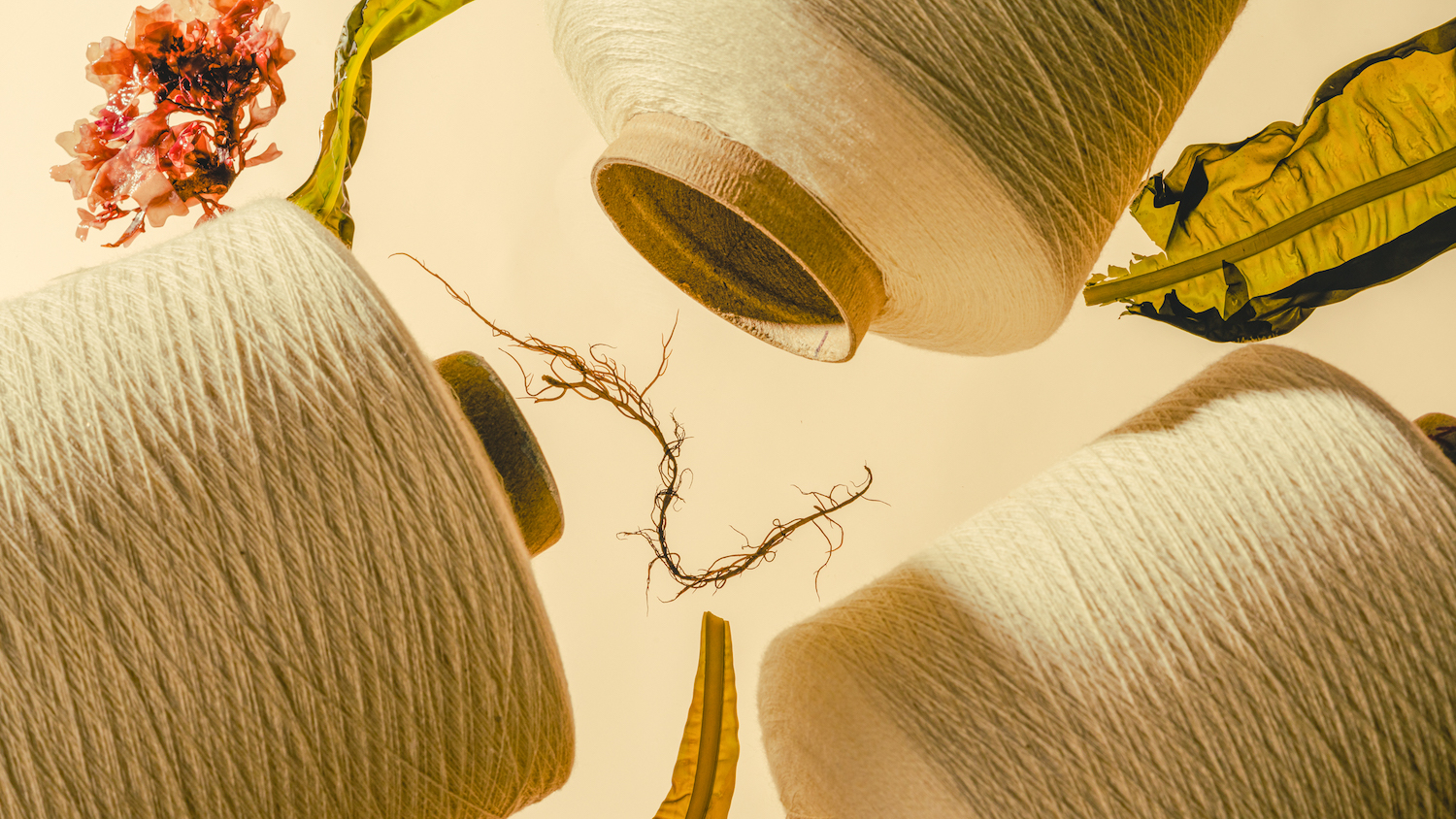
The future for marine fibers
The future for alternative fibers looks bright. The market for sustainable fabrics — worth nearly $26 billion in 2022 — is predicted to grow to almost $75 billion in 10 years. While organic cotton is likely to drive much of that growth, there’s ample room for more creative types of textiles.
Kelp may be a solid choice. Around 30 species of kelp are found in temperate and arctic coastal waters worldwide. And the global seaweed market is expected to grow to nearly $12 billion in 2030.
“We’re at this intersection right now in industrial history where there is this demand for greener production processes across the board in every industry,” Mekeel said. “It’s coming from environmental regulations and the need to replace, in a lot of cases, petroleum-based products, which have a finite amount available to us. And that coincides with an end-user consumer sentiment that we can do better.”
As products with sustainable attributes become increasingly mainstream, consumers should have more sustainable choices across the world of fiber, fabric and fashion. And if this comes from a beneficial source like kelp, all the better.
Featured image: Oleksandr Sushko/Unsplash
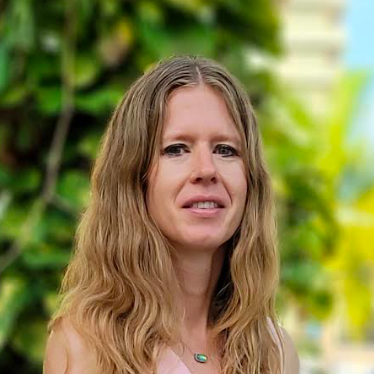
Ruscena Wiederholt is a science writer based in South Florida with a background in biology and ecology. She regularly writes pieces on climate change, sustainability and the environment. When not glued to her laptop, she likes traveling, dancing and doing anything outdoors.



